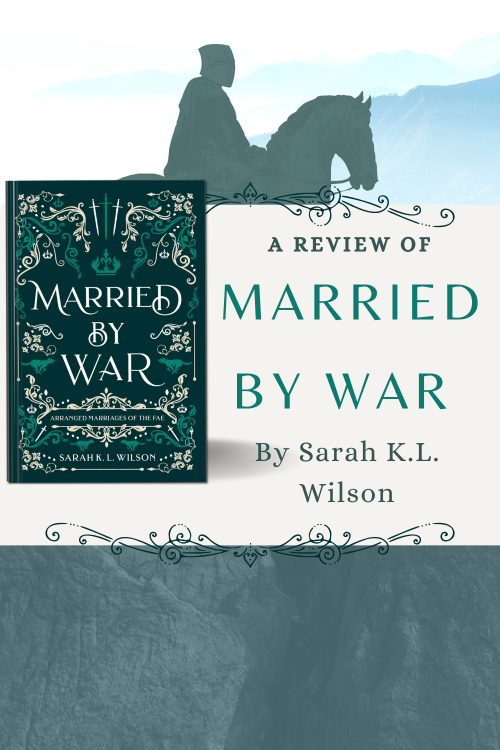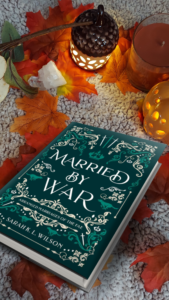Tag: Sarah K.L. Wilson
Review of Phoenix Heart: Ashes
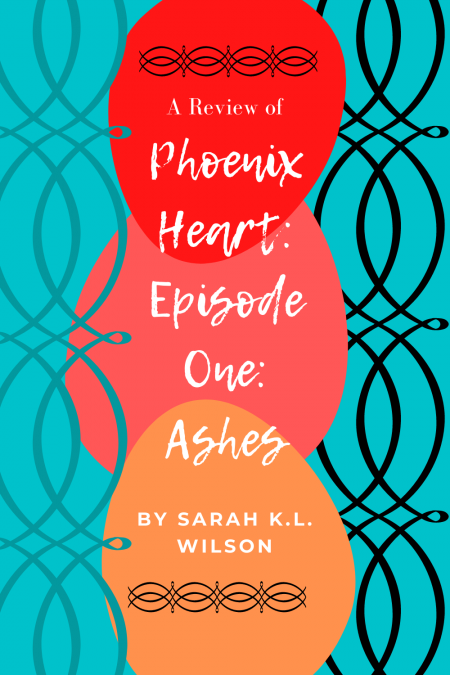
I’m so pleased to see more books coming out with disabled and chronically ill protagonists these days. Phoenix Heart: Season 1, Episode 1: Ashes (yes, a mouthful, but these novellas are being released episodically) has a wonderfully realistic heroine in Sersha, a mute teen at the mercy of her inn-running family. Sersha, whose troubles will feel familiar to many chronically ill/disabled readers, worries about her place in the world, how she’s perceived and what will happen when her family can’t support her any longer.
Ashes can easily be consumed in one sitting (though I recommend savoring Wilson’s emotional writing, if you can stand not seeing what comes next). It follows Phoenix Hope, a free short story available to the author’s mailing list subscribers. I highly recommend reading Phoenix Hope, too, possibly before sitting down with Ashes (the moving story of Sersha’s unlucky patients upstairs at the inn, when their ill-fated journey began).
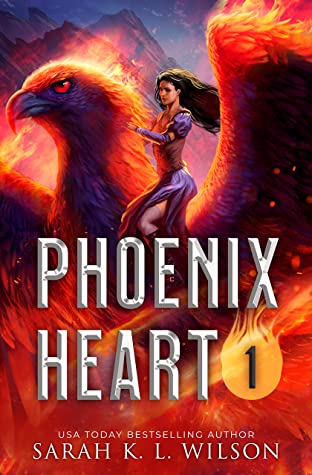
When Sersha finds herself the unwitting friend of grieving phoenix named Kazmarev (described as “A name with an adventure inside it”), for once, someone knows exactly what Sersha wants to say. She identifies with Kazmarev, but has no idea what’s in store for her, or that flame riders even exist.
When Kazmarev perishes with the dawn, Sersha assumes her own brief adventure is over. “It was like owning a pearl necklace for a day. Couldn’t you just enjoy it instead of being angry that you couldn’t keep it?” Sersha asks herself. She then returns to her precarious, uninteresting life helping her relatives at the inn—just as raiders arrive on the nearby shore.
Ashes shows Sersha, an overlooked young woman and a keen observer, finding an unexpected place in the world, and unexpected friends—both of which put her at the heart of the action. Though there is a complete story arc in Season 1, Episode 1, it’s clear her adventures are just beginning.
Phoenix Heart promises to be a relatively expensive series, which makes me want to ration each episode (readers who get in on the pre-orders will get a better price; as of writing, the first episode of season 2 still up for pre-order). Though uniformly short, the length of each episode varies. The bother comes because I’d love to consume them all at once without worry about the cost. Still, I look forward to reading more of Sersha and Kazmarev’s adventures, even if I wish they could each last—even just a tiny bit—longer.
To learn more about this author, visit Sarah K.L. Wilson’s website.
The Science of Phoenixes
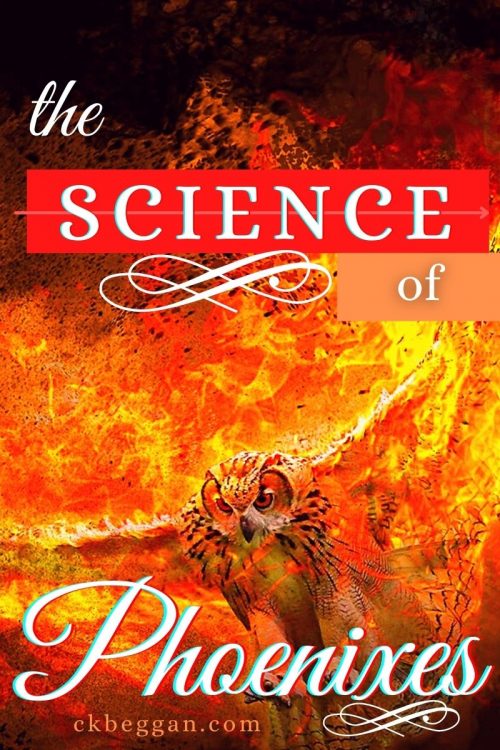
Recently, author Sarah K.L. Wilson (Sting Magic) posed a fun question in her newsletter. With her new series, Phoenix Heart, on the horizon, she made her own list of phoenix pros and cons (quoted with permission):
PHOENIX PROS
– they light things up!
– always good for toasting marshmallows!
– can’t keep them dead permanently
– vibrant personalities
PHOENIX CONS
– they tend to light things on fire by accident. Oops!
– these night owls are dead during the day – which is tough when you need their help!
– fiercely loyal to their riders, it’s hard to make them care about any other loyalties
– when you’re so beautiful, it’s hard not to look at your reflection in a passing lake.
Ms. Wilson then invited her readers to respond with their own pros and cons.
And that’s when I put my nerd thinking cap on.
I’ll be the first to tell you that, unlike my siblings, I’m not in STEM in any way, shape or form. I did pretty badly at science in school, as a matter of fact. But for whatever reason, science news really clicks for me. If only they could write text books like science articles, the whole subject would’ve made a whole lot more sense to me!
Some time ago, I heard an interview with a prominent figure in the field of neuroscience (I very much wish I could tell you her name), who discussed her theory on nutrition and human intelligence. I realize I’d never thought about the monsters and mythological creatures I read and write about that way: how do they eat, and what does that mean for how they function? Assuming this theory is correct, how creatures eat affects their behavior and abilities a lot.
After reading a recent Time article on why we dream, combined with some prior knowledge about neuroplasticity (the brain’s ability to change), I also started to think about instinct in monsters and mythological creatures. So, without further ado…
A Scientific Look at the Pros and Cons of Phoenixes
by C.K. Beggan
PRO
– Phoenixes always cook their food, and can be persuaded to share.
– No raw meat breath!
The Science: According to a neuroscience theory, cooked food is the key to human intelligence. Cooking makes nutrients more accessible to animals with inefficient digestion (in the case of a phoenix, one can’t fly when it takes hours to digest a simple meal, so digestion must be quick. That means not everything eaten can be broken down and absorbed, which equals fewer nutrients). Cooked food is easier to process and absorb nutrients from, which allows humans to have way more brain function than other animals. It takes a lot of nutrients to keep all our brain activity going, so cooking is key (plus it allows us to eat otherwise poisonous/tough things and increase nutrient sources). Phoenixes are also highly intelligent (of course!) and therefore benefit from cooking food like we do. Their brains would require it!
PRO
– Phoenixes are highly adaptable (you’d have to be, to get reborn!).
CON
– They’re vivid, active dreamers. Who wants to be kicked by a flaming bird dreaming about walking somewhere?
– Phoenixes are fairly helpless when reborn.
– Phoenixes may be prone to trauma after difficult or prolonged negative experiences.
The Science (!): Our ability to dream is a direct consequence of how adaptable our brains are (neuroplasticity). Without dreams, the human brain is so adaptable that it would lose space dedicated to sight when we sleep at night/during the long nights of winter when vision is limited. Dreams activate the vision portion of our brain and keep it intact. Animals born with a high degree of instinct, who can function well within hours of birth (e.g. species subject to predators that must be able to run away from day one) don’t have neuroplasticity/adaptability like we do. Therefore, they don’t require dreams like we do, because they won’t lose much by getting some shut eye. Their brains are more fixed. So if phoenixes are adaptable, they must dream like we do.
The consequence of this is that more neuroplasticity also means a period of prolonged danger or a traumatic event changes the brain. This is why humans experience PTSD (and/or effects on sleep, digestion, the immune system, you name it). A brain that adapts to danger helps a being in danger stay alive. Adapting back to safe conditions doesn’t happen quickly or easily, though. This could happen to anyone with an adaptable brain, even to the majestic phoenix!
Another example of this (if you even want one!) is that I was surprised by a spider in my bathroom recently. I am an arachniphobe. My brain considers spiders dangerous, so my fight or flight response was immediately triggered (I chose flight). Now I cannot go into that room without checking for a spider because my brain reminds me that spiders appear in my bathroom (and therefore the bathroom may be dangerous and must be approached with caution). Our brains are so flexible it doesn’t take much to create a new pattern of behavior! (On the other hand, if I saw an alligator in the lake, my brain would remind me to be careful around the lake and I’d be safer for it).
So a phoenix may have some hang ups like this, too. (My sister once worked with an arachniphobic sea lion, so even if your phoenix doesn’t have equal-to-human intelligence, it may refuse to go anywhere near webs and shriek). Therefore…
CON
– Despite being mighty, fire-clad animals, phoenixes can be fearful of tiny creatures and refuse to approach them no matter how much you try! A phoenix frightened of pigeons would be VERY inconvenient.
– Travel delays shall ensue.
Thanks for joining me on this mythological geek-out! If you’re a writer yourself (or just a mythology buff), I hope it encourages you to think of these creatures in a whole new light.
Cheers,
– CKB
PS: Do you think this should be a series of articles? What mythological creature do you think should be next? Let me know in the comments below!
Indie Book Spotlight: Sting Magic (Wilson)
It’s time for another Indie Book Spotlight!
Note: I received a free advanced reader copy of this book in exchange for an honest review.
Sting Magic, the first book in the new Empire of War and Wings series by prolific author Sarah K.L. Wilson, is a typo-dotted triumph. There are three reasons for that: world-building, a unique magic system, and the fact that it is never boring.
Main character Aella lives in a wild colony, the Far Stones, where residents have freedom and hardships alike. They’re poor and backwards by Imperial standards, but most of their time is spent farming in a land that likes to turn upside down and murder them—the Forbidding, a strange, viney magic that corrupts trees and bears and whatever else it can find. Aella’s family is her everything.
And then the heir to the Empire shows up.
That’s when Aella finds out that she has the same winged, creative twist on familiars-style magic as the Empire’s most celebrated warriors. It’s a dream and a nightmare for her. Except, instead of having birds like literally everyone, Aella hatches golden, magical bees. Heresy!
Aella is forced to leave her family to become property of the ruthless Le Majest, Juste Montpetit. In the course of a few hours she loses everything, with only the warm glow of her cute and happy bee familiars to comfort her. Aella has a litany of horrors to face as she travels through a perilous land alongside violent Imperials, and more than few mysteries to solve as she tries to save her family and weighs joining the rebels.
Familiar magic: Readers will love to hate Sting Magic‘s ruthless villain and adore Aella’s bees.
Sting Magic is a shorter novel that moves at a brisk pace. The cozy but disgruntled domestic scenes at the beginning are the closest it ever gets to slow, plus the “let me barge in and spend a long time asserting my authority even though I clearly have other houses to get to” encounter with the cruel prince that immediately follows it. The latter scene could have been more concise and still left the reader wanting to punch Juste Montpetit if given the chance. He’s pure villain, but it works.
An early exchange with Ospey also feels a touch long, and there’s a bit of bouncing around the timeline here and there that can be confusing. But the high stakes for the main character, combined with the mysteries of her magical and dangerous homeland, keep things moving.
That being said, Sting Magic wasn’t fully my cup of tea. One of its biggest weaknesses is its main character, not a weak female MC at all but a broadly sketched one. Aella is more reactive than anything, and replies angrily to her captors when I would’ve expected a brooding, calculating silence, given her goals. She’s a contradiction that way, flying off the handle despite repeatedly being told she could endanger her family, the absolute last thing she wants. She doesn’t read like a person with a hot temper, either.
I was relieved when Aella finally did something proactive toward her goal, and it filled in some of her missing personality. Still, I left the book with only a weak sense of who she is. (I hope Aella will be fleshed out more in the rest of the series.)
One of the reasons Aella’s weak personality stands out so much is because the other characters are so well-rendered: the irredeemably villainous prince, Juste Montpetit; the snooty society gal who just might be a friend, Zayana; the mentor with the huge personality, Ivo; and Osprey, the toothpick-gnawing would-be ally she can’t fully trust. They are never described extensively (Osprey gets a little extra detail so you’ll know he’s handsome), but the things these characters say and do gave me a clear picture of them and their personalities.
The magic system and world-building of Sting Magic are, of course, superb. I wished the writing was a bit more polished (those typos and repetitive phrases!), but the interesting world Wilson created kept me turning pages.
This is a quick read I recommend picking up, in which you can despise the villain, root for the heroine to accomplish her goals (“Be relentless.”), and lose yourself if an intriguing and dangerous world of fabulous magic.
